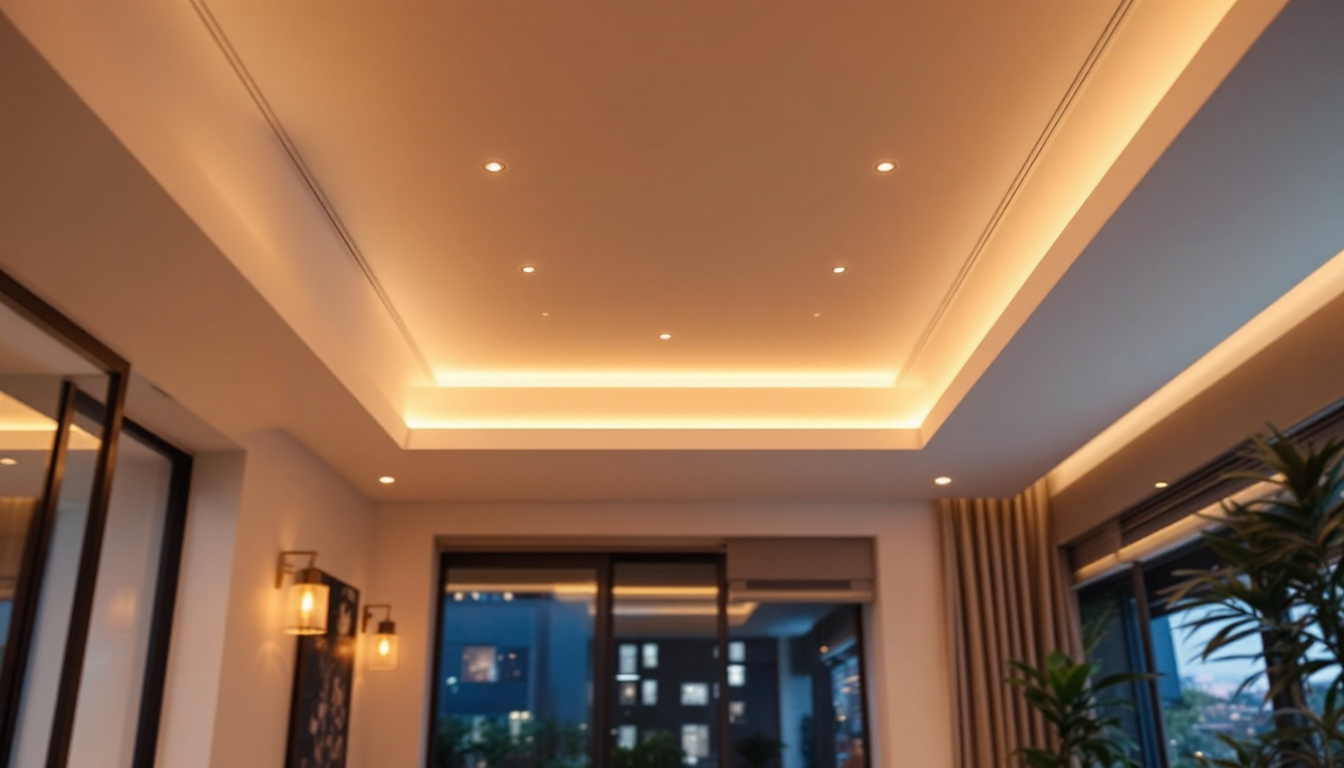
Lighting contractors play a crucial role in the design and installation of lighting systems, ensuring that spaces are not only illuminated but also aesthetically pleasing and functional. However, the path to successful project completion is often fraught with challenges. Understanding these hurdles can help contractors navigate the complexities of their work more effectively. This article explores some of the top challenges faced by lighting contractors and offers insights into how to address them.
One of the most significant challenges for lighting contractors is aligning their work with client expectations. Clients often have a vision that may not be fully articulated, making it essential for contractors to engage in thorough discussions to clarify requirements. This initial phase of understanding is crucial, as it sets the foundation for the entire project. By taking the time to listen and ask probing questions, contractors can uncover not just the surface-level desires of the client, but also the underlying motivations and practical needs that drive those desires.
Effective communication is key. Contractors must ask the right questions to uncover the client’s needs, preferences, and budget constraints. This dialogue not only helps in creating a design that meets expectations but also minimizes the risk of misunderstandings that can lead to dissatisfaction. Moreover, establishing a rapport with clients can significantly enhance the working relationship, making them feel valued and understood. This rapport can lead to more open discussions about potential challenges and creative solutions, ultimately resulting in a more successful project outcome.
Clients may come with ideas inspired by trends they’ve seen online or in showrooms. However, translating these visions into practical solutions can be challenging. Lighting contractors must possess a deep understanding of lighting technology and design principles to provide feasible options that align with the client’s aesthetic desires. This requires not only technical knowledge but also a keen sense of creativity and innovation. Contractors should be prepared to suggest alternatives that maintain the essence of the client’s vision while ensuring functionality and compliance with safety standards.
Additionally, educating clients about the limitations and possibilities of lighting can foster a collaborative environment. By providing insights into the technical aspects of lighting design, contractors can guide clients toward making informed decisions that enhance the overall project outcome. For instance, discussing the differences between LED and incandescent lighting can help clients understand energy efficiency and longevity, which can influence their choices. Furthermore, showcasing past projects through visual aids or mock-ups can help bridge the gap between client expectations and practical implementation, making the design process more tangible and relatable.
Budget limitations are a common concern in the lighting industry. Clients often have a specific budget in mind, which can restrict the options available for materials and fixtures. Lighting contractors must navigate these constraints while still delivering high-quality results. It is essential for contractors to be transparent about costs from the outset, providing clients with a clear breakdown of where their money is going. This transparency builds trust and allows clients to make more informed decisions about where they might want to allocate their resources.
To manage budgetary challenges effectively, contractors should provide clients with a range of options at different price points. This approach allows clients to make choices that align with their financial capabilities without compromising on quality or aesthetics. Additionally, offering suggestions for cost-effective alternatives, such as bulk purchasing or phased implementation, can help clients achieve their desired look while staying within budget. By being proactive in addressing financial concerns, contractors can create a more positive experience for clients, leading to potential referrals and repeat business in the future.
The lighting industry is continually evolving, with new technologies emerging regularly. For lighting contractors, staying updated with the latest advancements is essential for maintaining a competitive edge. However, this can be a daunting task.
New technologies, such as smart lighting systems, LED advancements, and energy-efficient solutions, require contractors to invest time in learning and adapting. This ongoing education is vital not only for personal growth but also for meeting client demands for innovative solutions.
Investing in training programs and workshops can help contractors keep their skills sharp and stay informed about industry trends. Many manufacturers offer training sessions on their products, which can be invaluable for contractors looking to expand their knowledge base.
Furthermore, participating in industry conferences and networking events allows contractors to connect with peers and learn from their experiences. This exchange of knowledge can lead to improved practices and innovative solutions that benefit both contractors and clients.
As smart technology becomes more prevalent, lighting contractors face the challenge of integrating these systems into their designs. Clients are increasingly interested in smart lighting solutions that offer convenience and energy efficiency. However, understanding how to implement these technologies can be complex.
Contractors must familiarize themselves with various smart lighting products and systems, as well as the compatibility of these technologies with existing infrastructure. This knowledge is crucial for providing clients with seamless installations that enhance their living or working spaces.
Compliance with local regulations and safety standards is a critical aspect of any lighting project. Lighting contractors must navigate a myriad of codes and regulations that govern electrical installations and lighting designs. Failure to comply can result in costly fines and project delays.
Understanding these regulations requires diligence and attention to detail. Contractors should stay informed about local codes and any changes that may impact their work. This proactive approach not only ensures compliance but also enhances the contractor’s reputation as a reliable professional.
Safety is paramount in any construction-related field, and lighting contractors are no exception. Proper installation of lighting fixtures and systems is essential to prevent hazards such as electrical fires or electrocution. Contractors must adhere to safety protocols and best practices throughout the installation process.
Providing training for employees on safety standards and procedures can help create a culture of safety within the contracting team. Regular safety audits and assessments can also identify potential risks and ensure that all installations meet the required safety standards.
Lighting projects often involve multiple stakeholders, including architects, interior designers, and electricians. Coordinating these different parties can be a significant challenge for lighting contractors. Effective project management is essential to ensure that all aspects of the project align seamlessly.
Contractors must develop strong organizational skills and utilize project management tools to keep track of timelines, budgets, and responsibilities. Clear communication among all parties involved is vital for minimizing misunderstandings and ensuring that the project progresses smoothly.
Delays and unexpected setbacks can occur in any project, and lighting installations are no exception. Whether due to supply chain issues, weather conditions, or changes in client requirements, contractors must be prepared to adapt to these challenges.
Having contingency plans in place can help mitigate the impact of delays. Contractors should communicate openly with clients about potential setbacks and provide realistic timelines for project completion. This transparency fosters trust and helps manage client expectations effectively.
Quality control is essential in ensuring that lighting installations meet the highest standards. Contractors must implement rigorous quality assurance processes to monitor the work being done and ensure that it aligns with the project specifications.
Regular inspections and assessments throughout the installation process can help identify issues early on, allowing for timely corrections. This commitment to quality not only enhances the final product but also bolsters the contractor’s reputation in the industry.
As sustainability becomes an increasingly important focus in the construction industry, lighting contractors face the challenge of incorporating environmentally friendly practices into their work. Clients are often looking for energy-efficient solutions that reduce their carbon footprint and lower energy costs.
Contractors must stay informed about sustainable lighting options, such as LED fixtures and smart lighting systems that optimize energy usage. Educating clients on the benefits of these solutions can help promote environmentally conscious choices.
Energy-efficient lighting not only benefits the environment but can also result in significant cost savings for clients. Contractors should be well-versed in the latest energy-efficient technologies and be able to recommend solutions that align with the client’s goals.
By emphasizing the long-term benefits of energy-efficient lighting, contractors can position themselves as knowledgeable experts in sustainability, attracting clients who prioritize eco-friendly practices.
Proper waste management is another critical aspect of sustainable practices in lighting installations. Contractors must consider how to minimize waste during installations and ensure that materials are disposed of responsibly.
Implementing recycling programs for old fixtures and materials can demonstrate a commitment to sustainability and resonate with environmentally conscious clients. This proactive approach not only benefits the planet but also enhances the contractor’s reputation as a responsible business.
The landscape of the lighting contracting industry is filled with challenges, from managing client expectations to navigating technological advancements and regulatory compliance. By understanding these hurdles and developing strategies to address them, lighting contractors can enhance their effectiveness and deliver exceptional results.
Staying informed, investing in training, and prioritizing communication are essential components of success in this dynamic field. As the industry continues to evolve, contractors who embrace these challenges will not only thrive but also contribute to creating beautiful, functional, and sustainable spaces.
Overcoming the challenges in the lighting contracting industry requires not just skill and knowledge, but also the right partners. At LumenWholesale, we stand ready to support you with spec-grade lighting products that meet the highest industry standards. Say goodbye to inflated markups and hello to unbeatable wholesale prices, free shipping, and the convenience of bulk buying. Elevate your lighting projects with the quality, affordability, and reliability that LumenWholesale provides. Discover our extensive selection and start transforming spaces with confidence. Wholesale Lighting at the Best Value is just a click away.

Discover essential resources and expert tips for mastering T8 bulb fixtures in this comprehensive guide tailored for lighting contractors.

Discover the top picks for the brightest solar lights to illuminate your walkway.

Discover how incorporating recessed LED lights into your projects can give you a competitive edge in the lighting industry.

Discover the top motion sensors for lights as expert lighting contractors share their insights and recommendations.